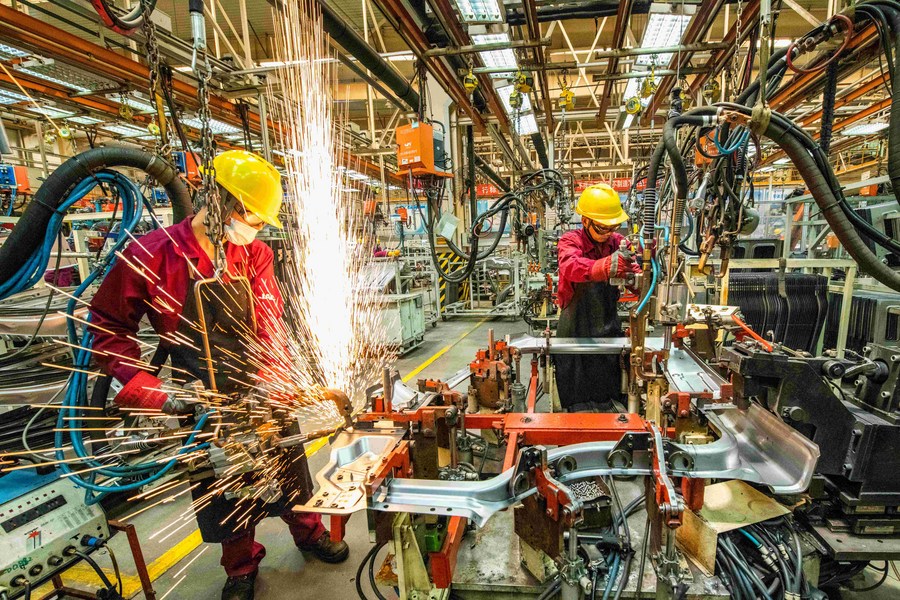China's PMI holds steady as economy sustains steady expansion
 0 Comment(s)
0 Comment(s) Print
Print E-mail Xinhua, May 31, 2021
E-mail Xinhua, May 31, 2021

The purchasing managers' index (PMI) for China's manufacturing sector came in at 51 in May, slightly down from 51.1 in April, data from the National Bureau of Statistics showed Monday.
A reading above 50 indicates expansion, while a reading below reflects contraction.
The May PMI is higher than the same period in 2019 and 2020 and is indicative of China’s steady economic growth, said NBS senior statistician Zhao Qinghe.
The sub-index for production stood at 52.7 in May, up 0.5 percentage points from April, signaling a faster recovery in the sector.
In a sign of slower growth in demand, the sub-index for new orders slid 0.7 percentage points from that in April to 51.3, while that for new export orders edged down to 48.3 from 50.4.
The sub-index for new export orders fell into the contraction zone, mirroring a reduction of foreign orders compared with a month earlier, Zhao said.
Such a decline revealed that the foundation underpinning global economic recovery is not solid yet, which might drag down external demand and weigh on China's exports, said Wen Bin, a chief analyst at China Minsheng Bank.
Due to the climbing prices of global commodities, the index measuring purchase prices of major raw materials rose 5.9 percentage points from April to 72.8, while the ex-factory price index climbed to 60.6, up 3.3 percentage points from last month.
Faced with price hikes in bulk commodities, China has moved fast and tailored measures to fend off rising raw material costs and stabilize the market, assuaging worries among manufacturers.
In an effort to ensure supplies of bulk commodities, the country has adopted a zero-tolerance attitude on irregularities, introduced provisional favorable tax policies and tightened regulation on commodity futures trading.
Monday's data also showed that the PMI for China's non-manufacturing sector came in at 55.2, up 0.3 percentage points from the April figure.
The expansion reflects a faster recovery in the services sector as epidemic control efforts paid off and consumption demand continued to increase boosted by the Labor Day holiday, said Zhao.
The sub-index tracking business activity expectations for the services sector hit 62.4, remaining above 62 for four consecutive months, showing most service enterprises are optimistic about the market in the future.
The data as a whole hinted at a rebounding non-manufacturing sector, as consumer spending in the services sector gained ground, Wen said.
For the next step, efforts should be made to ensure the supply and stable prices of bulk commodities, further boost domestic demand and guard against potential fluctuations in external demand, Wen said, citing challenges such as rising raw materials costs and renminbi appreciation.
China's economy grew 18.3 percent year on year in the first quarter of 2021, as strong domestic and foreign demands powered recovery from a low base in early 2020.






Go to Forum >>0 Comment(s)